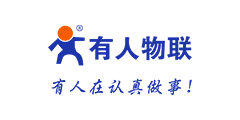Four LTE Standards for Large-Scale Internet of Things




When you design a cellular IoT product, you must plan for connectivity from the beginning. Soon, you are faced with a difficult choice: choose the LTE standard. Which 4G LTE (or 5G NR) standard should you design for? The answer will determine the direction of your connectivity technology, from which chipset and module to use to which mobile network operator you work with.
If you're designing for large-scale IoT deployments, from smart meters to wearable consumer devices to industrial self-driving cars, LTE cellular networks give you four options. (These are likely to change as we approach 2030, with 4G LTE networks giving way to 5G new radios [NR] … But we will discuss this shift and its implications for device manufacturers in a separate article.) For now, read on for tips on which LTE standard will provide the most value for your product, including common use cases for each.
Four LTE Standards for Large-Scale Internet of Things
Today's massive IoT connectivity ecosystem offers these LTE standards, each for different scenarios. Here are today's choices, along with some standard applications for each:
1. LTE Cat 1
Long Term Evolution (LTE) networks impose a size limit on data as it travels through the cellular network. In 2008, the standardization authority 3GPP released Release 8, which defines specifications for user equipment (UE) into five categories.
The first of these — LTE Cat 1 — defines a maximum data transfer rate of 5 megabytes per second upload (5 Mbps UL) and 10 Mbps per second download (10 Mbps downlink). This makes LTE Cat 1 the first standard designed specifically for the Internet of Things, which typically requires lower data rates than Netflix streams on mobile phones.
You may think that the standard, which first appeared in 2008, is outdated. In fact, the opposite is true: because LTE Cat 1 is a mature technology, it's basically available everywhere, and it provides enough data throughput to support a wide variety of use cases. This is not always the case, and we will discuss the third and fourth items on this list in our coverage of NB-IoT and Cat-M.
2.LTE Cat 1bis
The LTE Cat 1 module uses two antennas. For equipment manufacturers looking to save space or cut costs, one antenna may be more appropriate. Enter LTE Cat 1bis, which is essentially a version of the LTE Cat 1 standard (5 Mbps UL and 10 Mbps DL) on single-antenna hardware.
Cat 1bis modules may lose some coverage compared to dual-antenna modules, but the difference rarely translates into user experience. When Se Quans, the producer of the Calliope chipset (the first LTE platform optimized for Cat 1), conducted field tests, they found that the single antenna lost only a few decibels of coverage compared to the two-antenna Cat 1 module and that the platform's advanced signal processing technology could mitigate this loss.
In addition, cellular networks are often limited by uplinks, resulting in little or no difference in how customers feel when using one or two antennas, as reported by millions of customers using only one antenna in real-world deployments. This demonstrates the relevance of the Cat 1bis Optimized Platform to provide cost improvements while providing nearly equivalent Cat 1 performance. Finally, it is important to emphasize that any Cat 1 network can enable Cat 1bis devices without any network changes or upgrades.
All of this makes the LTE Cat 1bis a great choice for small devices with moderate data needs, including voice or video data.
Common IoT use cases for LTE Cat 1 and LTE Cat 1bis
Because LTE Cat 1 and Cat 1bis use essentially the same baseline specifications, the same types of applications are covered. The difference is whether a single antenna design is better for your product because it saves space or cost. (Benefits vary from project to project, which is why choosing a chip/module provider with expertise can help guide you to your ideal technology).In addition, when using the new generation of dedicated Cat 1bis modules, users can benefit from optimized RF and power performance, as well as additional features such as integrated GNSS or integrated eSIM.
These standards provide near-universal coverage and higher data limits than NB-IoT or LTE-M. This makes them particularly flexible for devices with different data throughput needs and/or cross-country deployments. Common use cases for LTE Cat 1 include:
● Internet of Things retail kiosk
● Hot spot in the car
● Gaming equipment
● Smart Grid Products
● Home Security System
● Wearable camera
● Point of sale terminal
● Health Monitor
● Smart Watch
● However, for lower data requirements, 3GPP does offer two LTE standards designed for large-scale IoT projects: NB-IoT and LTE-M.
- |
- +1 赞 0
- 收藏
- 评论 0
本文由三年不鸣转载自usr News,原文标题为:Choose the IoT LTE standard,本站所有转载文章系出于传递更多信息之目的,且明确注明来源,不希望被转载的媒体或个人可与我们联系,我们将立即进行删除处理。
相关推荐
【经验】解析串口服务器USR-TCP232-410如何使用485口并联方式与设备通信
本文主要介绍串口服务器USR-TCP232-410使用485口并联方式与设备通信。有人物联410的485口最大支持32个设备,485总线协议标准是200多个,实际连接还需要设备的负载决定。
【经验】有人物联解析什么是LTE CAT 1
CAT-M1 (LTE-M) 是一种蜂窝技术,属于4G同系列的低版本,可以完全重用现有的4G资源,具有低功耗、低成本、高速率的特征。国内通常称为Lte cat 1或Cat 1。专门针对针对物联网 (IoT) 或机器对机器 (M2M) 通信的应用程序的需求而设计。
【经验】有人物联一文解析边缘计算网关及其对工业联网的作用
边缘计算网关在工业联网中扮演着数据处理、安全性增强、资源优化和实时响应等方面的角色,为工业系统的智能化和高效运行提供支持。USR-M300是一款高性能可拓展的综合性边缘网关,以“积木”形态快速实现应用拓展,具备超强的网络功能和强劲的边缘计算能力,可以为不同行业用户提供满足其业务需求以及未来发展方向的定制化产品和解决方案。
有人物联(usr)以太网系列产品选型指南
目录- 公司简介和主营产品概览 串口服务器 Wi-Fi 串口服务器 以太网模块 工业级以太网交换机 数据采集网关系列
型号- USR-W600,USR-K7,USR-K6,USR-N510,USR-CANET200,USR-TCP232-T2,USR-SDR080,USR-SDR160,USR-SDR041,USR-M511,USR-SDR021,USR-N668,USR-TCP232-ED2,USR-TCP232-E2,USR-N540,USR-N520,USR-N580,USR-W630,USR-W610,USR-TCP232-S2,USR-SDR050,USR-TCP232-306,USR-TCP232-410S,USR-TCP232-304,USR-TCP232-302
有人物联推出IP转换器USR-G807,支持宽压9~36V供电,解决PLC跨网段通讯难题
有人物联推出的IP转换器USR-G807采用钣金外壳、散热更佳,支持宽压9~36V供电,解决PLC终端无法修改IP问题和PLC跨网段通讯难题。该产品可以在不修改原系统的任何软硬件,不影响原系统正常通信,实现PLC的IP地址转换;具备核心NAT功能,可实现LANO设备IP和端口映射到WAN口的任意IP。
鼎桥CEO莅临有人物联参观交流,深化5G战略合作
在数字化转型浪潮的推动下,物联网技术的融合创新成为推动工业产业升级的关键力量。近日,行业领先的物联网解决方案服务提供商——有人物联,与享誉全球的通信解决方案供应商鼎桥通信技术有限公司,正式签署战略合作框架协议。此次合作不仅标志着双方在5G RedCap工业通信领域达成战略合作,也预示着双方共同推动物联网技术与产业的深度融合的坚定决心。
打破远程运维边界,有人物联异地组网方案彻底解决终端设备无法统一远程管理痛点
现在,只需将这些终端设备连接在有人物联路由器网口下,通过异地组网平台简单配置,就能轻松搭建起一个终端互通的网络。企业总部人员或外出员工借助手机、PC随时随地对终端进行远程调试、下载程序、配置等运维操作,彻底解决终端设备无法统一远程管理的痛点。
有人物联网双网口8串口的串口服务器USR-N580,独特的工业功能支持,支持Modbus网关功能
为了能为客户降低成本和减少布线难度,有人物联网研发出了一款双网口8串口的串口服务器,专门应用于多设备联网的复杂环境。八串口服务器USR-N580,是用来将TCP/UDP数据包与RS485接口实现数据透明传输的设备。 独特的工业功能支持,支持Modbus网关功能,更加方便工业现场使用。 支持网络打印,打印机行业使用更加方便。
【选型】有人物联WiFi6工业无线客户端、小体积5G工业数传终端满足AGV小车联网需求,确保通信稳定
AGV小车要不断移动就要依靠稳定的无线通信网络覆盖,以及快速的AP间漫游切换,保证各工业场景中AGV的高效稳定工作。AGV无线通信组网系统要具备较大带宽,支持实时双向通信,能够承载诸如高清视频、机器人/车辆运行数据、传感器数据、语音及其他网络业务。有人物联新推出的WiFi6工业无线客户端W660和小体积5G工业数传终端G815可助力AGV+物联网推动各行各业数字化转型升级。
水利应用全场景揭秘,有人物联响应时代号召,打造行业产品新高度
有人物联响应时代号召,深研水利行业应用十大场景,围绕智慧水利、智慧灌区、高标准农田、水库大坝安全监测、测控一体化闸门等核心板块,提供完整完善的有人水利行业产品组合。
有人物联新推出小体积5.8GHz无线网桥ST508E及千兆PoE交换机S1210P,性价比高
有人网通产品品类丰富,覆盖无线网桥、百兆/千兆/PoE交换机、AC管理机、无线吸顶/户外AP、WiFi6核心板、5G CPE等产品,致力于满足各行业有线、无线数据传输需求。近日,有人网通产品再添两员“强将”,无线网桥ST508E &千兆PoE交换机S1210P,性能给力,性价比高。
有人物联(usr)通信网关/通信模组/交换机选型指南(中文)
描述- 国内领先的工业物联网软硬件解决方案服务商
型号- USR-S100-WS4W-CA,USR-SDR050-L,N520,USR-DR512,USR-SF1008,USR-SF1005,USR-PLCNET-510,USR-DR514,USR-DL216-L,USR-ISG008P,USR-LG206-L,IO0080,USR-DR185,IO808(CAT-1),USR-S100-GU4D-CA,N510,USR-ISG,USR-N520,USR-W610,USR-IO34,USR-IO0440,AC1000,USR-DR504,USR-DR502,IO808(EWR),USR-G805S,USR-M100-HM,USR-S100-GU4G-CA,USR-ISG208P-SFP,USR-G806R,DR185,N540,USR-D24-15,USR-M300,USR-N510,USR-DR134,USR--TCP232-30X,USR-DR132,USR-TCP232-T0,USR-TCP232-T1,USR-G780S,USR-ISG005,AP520X,USR-G806W,IO424T-EWR,USR-TCP232-E2,USR-G806S,WH-L101-L,USR-N580,ST515N,NR310I,USR-G780,USR-G781,IO808,USR-DR404,USR-DR206-L,USR-ISG系列,USR-D12-54,USR-S100,USR-DR152,USR-K5,USR-G817,USR-W660,USR-IO0404,WH-GM800,USR-N5X0,USR-DR154,USR-SG,USR-D24-36,USR-SG系列,G810,USR-PLCNET-310,USR-G771,WH-GM5,USR-DR30X,ST508E,G817,G816,USR-G816,AP530X,USR-G815,USR-TCP232-ED2,USR-G809,USR-S100-GU4H-CA,IO0440,USR-IO8000,USR-DR13X,USR-DR302,USR-DR301,AP310I,USR-TCP232-S1,USR-IO4040,USR-IO0080,NR530X,USR-TCP232-304,USR-G805,USR-M100-ARD,USR-S1210P,G806W,USR-LG210-L,USR-M100,USR-S100-WL4J-CA,USR-FQ610,USR-EG818,USR-PLCNET-210,USR-N668,USR-D24-60,USR-W630S,USR-LG207-L,USR-D12-24,AC200,IO424T-CAT-1,USR-N540,WH-LTE-7S1,WH-LTE-7S0,USR-IO34(CAT-1),USR-SG1008,USR-D12-15,N580,USR-SG1005,USR-TCP232-410S,NR520X
【电气】有人物联白金系列工业级交换机,工业防雷6000V,专为严苛工业环境设计
白金系列是有人物联推出的5口/8口、百兆/千兆工业级以太网交换机,专为严苛工业环境而设计。满足轨道交通、平安城市、智能交通、安防监控和其他恶劣环境中的部署要求,为用户的以太网设备提供可靠、便捷的联网解决方案。
有人物联网基于DTU实现远程自动抄表应用接入、数据管理和分析、远程控制等功能
基于DTU实现远程自动抄表应用方案,可以大大提高抄表的效率和准确性,同时降低企业的管理成本。随着物联网技术的不断发展,基于DTU实现远程自动抄表应用方案也将不断升级和完善,为企业管理提供更加强大的支持。
电子商城




























































































































































































登录 | 立即注册
提交评论